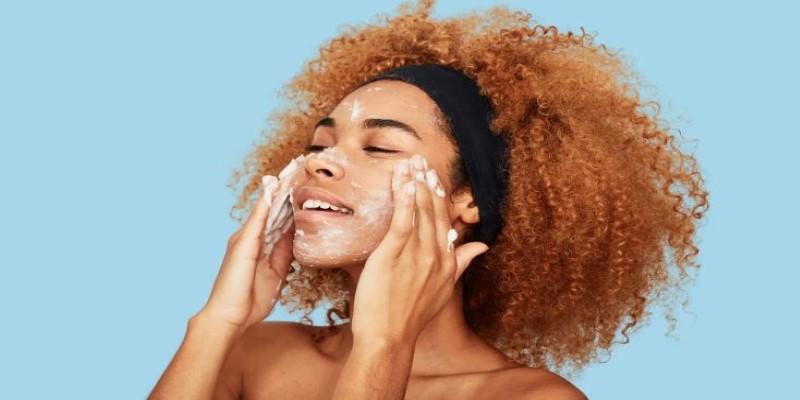Nighttime skin care is one of those rituals many of us believe we’ve perfected, yet it’s often the small, overlooked steps that quietly undermine progress. After a long day, the evening routine becomes both a reset and a skin repair session. While the hours we sleep allow the body to restore itself, the products and habits we choose before bed can either help or hinder that process.
Some habits might feel harmless—like skipping a cleanser now and then or piling on heavy creams—but over time they can leave skin looking dull, congested, or prematurely aged. Understanding the mistakes we might be making each night is the first step to creating a routine that actually works with, not against, our skin’s natural rhythms.
It sounds simple, but skipping a thorough cleanse before sleep is a mistake many people still make. Throughout the day, skin collects dirt, sweat, oil, and environmental pollutants that settle into pores. Even if you didn’t wear makeup, these impurities create a film that blocks products from absorbing and can trigger breakouts or inflammation.
A splash of water is not enough. Cleansing at night requires patience. Opt for a gentle, pH-balanced cleanser that removes build-up without stripping natural oils. Double cleansing, where you start with an oil-based cleanser to dissolve makeup or sunscreen and follow with a water-based formula, is often the most effective method. This practice ensures your skin is truly clean and ready to receive the benefits of nighttime serums or moisturizers. Skipping it means you’re essentially layering products on top of debris, which can clog pores and slow skin renewal.
The evening is a popular time to apply stronger active ingredients, such as retinoids, chemical exfoliants, or concentrated serums. While these can be powerful tools for smoother, brighter skin, overdoing them is one of the biggest nighttime mistakes. Applying too many high-strength products at once can disrupt your skin barrier, leading to redness, peeling, and sensitivity.
Instead of chasing fast results, think of skin care as a marathon, not a sprint. Treatments like glycolic acid, retinol, or vitamin C serums should be introduced gradually. Rotating them through the week rather than layering them all in one night keeps the skin balanced and prevents irritation. Supporting these treatments with calming products, like hydrating serums or lightweight moisturizers, creates a routine that helps your skin progress steadily rather than in cycles of irritation and recovery.
Moisturizer isn’t just a finishing touch—it’s a key step in keeping skin balanced while you sleep. A common mistake is either skipping it altogether or applying too much heavy cream, which suffocates the skin. Both extremes can cause problems. Without moisturizer, skin may dry out overnight, especially in low-humidity environments, leaving it tight and flaky by morning. On the other hand, using a thick cream without considering your skin type can trap oil and cause congestion.
The goal is to choose a formula that supports your skin’s needs. For oily or combination types, a lightweight gel-based moisturizer works well. Dry or mature skin often benefits from a richer cream with ingredients like ceramides, hyaluronic acid, or squalane. Another detail often overlooked is applying moisturizer while the skin is still slightly damp, which helps lock in hydration more effectively. Getting this step right makes a noticeable difference in how skin feels and looks the next day.
Skin care doesn’t end with what you put on your face—it extends to the environment you sleep in. Pillowcases, sheets, and even the way you sleep play a role in skin health. A pillowcase that hasn’t been washed in a week can harbor oil, sweat, and bacteria, which transfer back onto your skin each night. This can lead to breakouts or irritation, especially for those with sensitive or acne-prone skin.
Choosing fabrics like cotton or silk and washing pillowcases at least once or twice a week helps reduce the risk. The way you sleep matters too. Sleeping on your stomach or side presses your face into the pillow, creating friction and fine lines over time. While it may not be easy to change, training yourself to sleep on your back or using a silk pillowcase can minimize creasing and irritation. Small changes in sleep hygiene often lead to better results from your nighttime routine.
Consistency matters more than an overflowing cabinet of products. A mistake many people make at night is constantly changing routines or chasing trends. Skin responds best to regular care with products that suit its needs. Jumping from one routine to another not only confuses the skin but also makes it harder to tell what’s working.
Equally problematic is overcomplicating things. More steps don’t always mean better results. In fact, layering too many products can overwhelm the skin, causing reactions or reducing the effectiveness of active ingredients. A streamlined evening routine that includes cleansing, targeted treatment if needed, moisturizer, and occasional extras like masks or exfoliants is often more effective than a 10-step lineup. It gives the skin time to adapt and repair consistently, which leads to healthier long-term outcomes.
Nighttime skin care isn't about perfection, but about making choices that allow your skin to repair itself while you rest. Mistakes like skipping cleansing, overloading treatments, using the wrong moisturizer, ignoring sleep hygiene, or complicating the routine too much can all chip away at your progress without you even realizing it. Building a routine that balances discipline with simplicity ensures your skin has what it needs to restore itself overnight. Think of the evening not just as the end of your day but as the start of your skin's healing process. With the right habits, those quiet hours of sleep can become your skin's best ally.
 TOP
TOP
If you still believe that women don’t get heart diseases or that only older people can have heart diseases, you are wrong
 TOP
TOP
How building wealth is possible at any age with practical strategies that focus on consistent habits, smart choices, and long-term thinking
 TOP
TOP
Start making the most of your 401(k) today and secure a stronger financial future. Learn how timing, employer matches, and smart contributions can improve your retirement
 TOP
TOP
How financial aid for college works—from grants and scholarships to loans and work-study programs. Get clear, practical guidance for every funding option
 TOP
TOP
Discover 5 unique horse races that take place around the world, blending speed, thrill, and stunning cultural locations.
 TOP
TOP
Discover how Easter is celebrated across countries, from egg rolling to water fights, offering joy through local traditions.
 TOP
TOP
Explore North Wales’ most breathtaking gardens, from serene floral paths to hillside greenery with sea views.
 TOP
TOP
Wondering if it’s the right time for a loan? Learn how rates, timing, and your finances impact the decision.
 TOP
TOP
Discover the top reasons to pay credit card bills on time and how it safeguards your credit, money, and peace of mind.
 TOP
TOP
Uncover the best experiences in Rome, Italy, with this essential guide. Walk through ancient ruins, explore piazzas, visit historic churches, and get to know the Eternal City at your own pace
 TOP
TOP
Discover the best places to stay in Nashville, from lively downtown hotels to charming neighborhood rentals. Explore top areas suited for music lovers, families, and anyone seeking the perfect Nashville experience
 TOP
TOP
Thinking about a lease buyout? Learn how to evaluate your options, compare costs, and decide whether keeping your vehicle is the right move. Understand the financial side before making your next step